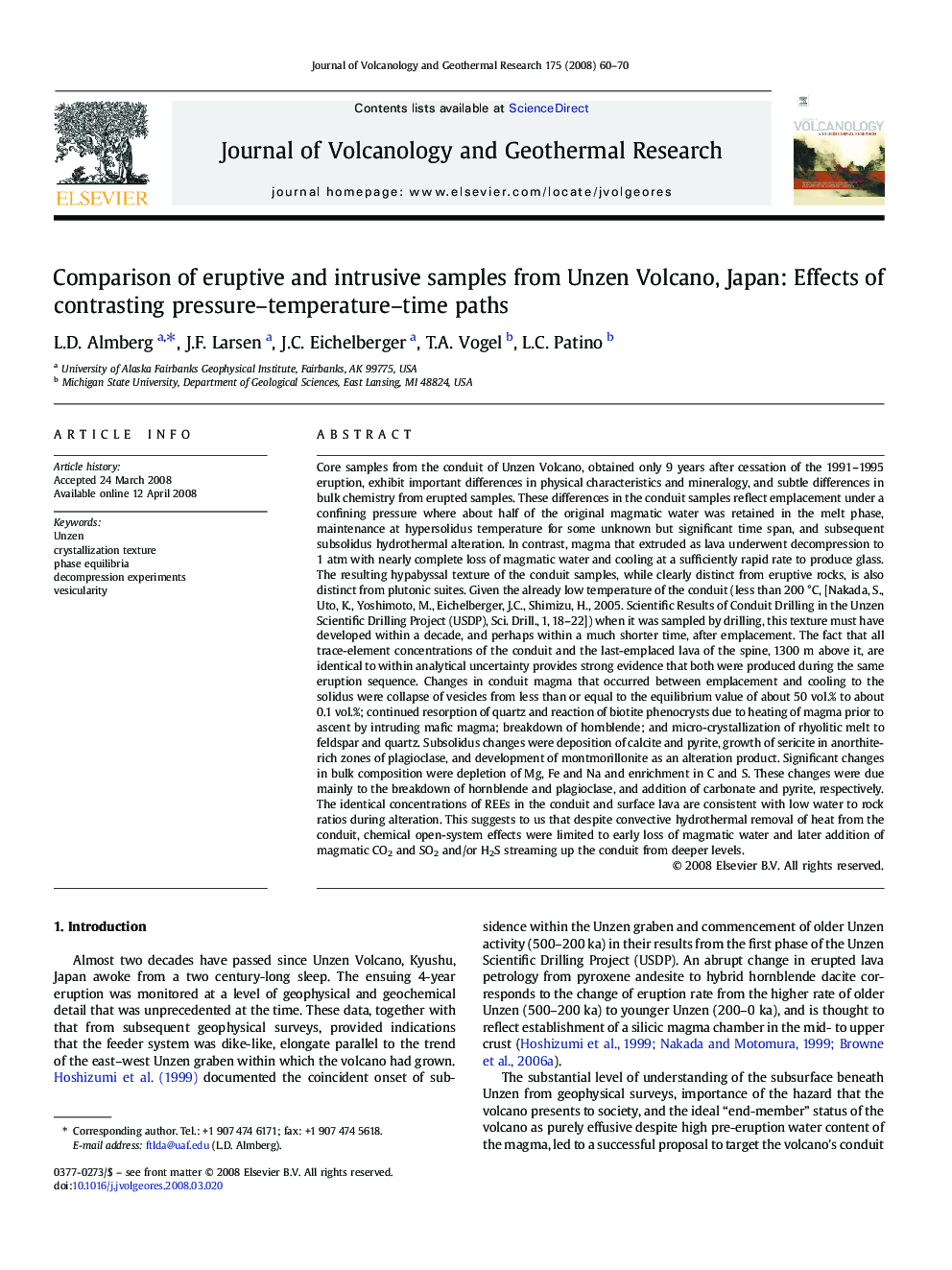| Article ID | Journal | Published Year | Pages | File Type |
|---|---|---|---|---|
| 4713627 | Journal of Volcanology and Geothermal Research | 2008 | 11 Pages |
Core samples from the conduit of Unzen Volcano, obtained only 9 years after cessation of the 1991–1995 eruption, exhibit important differences in physical characteristics and mineralogy, and subtle differences in bulk chemistry from erupted samples. These differences in the conduit samples reflect emplacement under a confining pressure where about half of the original magmatic water was retained in the melt phase, maintenance at hypersolidus temperature for some unknown but significant time span, and subsequent subsolidus hydrothermal alteration. In contrast, magma that extruded as lava underwent decompression to 1 atm with nearly complete loss of magmatic water and cooling at a sufficiently rapid rate to produce glass.The resulting hypabyssal texture of the conduit samples, while clearly distinct from eruptive rocks, is also distinct from plutonic suites. Given the already low temperature of the conduit (less than 200 °C, [Nakada, S., Uto, K., Yoshimoto, M., Eichelberger, J.C., Shimizu, H., 2005. Scientific Results of Conduit Drilling in the Unzen Scientific Drilling Project (USDP), Sci. Drill., 1, 18–22]) when it was sampled by drilling, this texture must have developed within a decade, and perhaps within a much shorter time, after emplacement. The fact that all trace-element concentrations of the conduit and the last-emplaced lava of the spine, 1300 m above it, are identical to within analytical uncertainty provides strong evidence that both were produced during the same eruption sequence. Changes in conduit magma that occurred between emplacement and cooling to the solidus were collapse of vesicles from less than or equal to the equilibrium value of about 50 vol.% to about 0.1 vol.%; continued resorption of quartz and reaction of biotite phenocrysts due to heating of magma prior to ascent by intruding mafic magma; breakdown of hornblende; and micro-crystallization of rhyolitic melt to feldspar and quartz. Subsolidus changes were deposition of calcite and pyrite, growth of sericite in anorthite-rich zones of plagioclase, and development of montmorillonite as an alteration product. Significant changes in bulk composition were depletion of Mg, Fe and Na and enrichment in C and S. These changes were due mainly to the breakdown of hornblende and plagioclase, and addition of carbonate and pyrite, respectively. The identical concentrations of REEs in the conduit and surface lava are consistent with low water to rock ratios during alteration. This suggests to us that despite convective hydrothermal removal of heat from the conduit, chemical open-system effects were limited to early loss of magmatic water and later addition of magmatic CO2 and SO2 and/or H2S streaming up the conduit from deeper levels.
